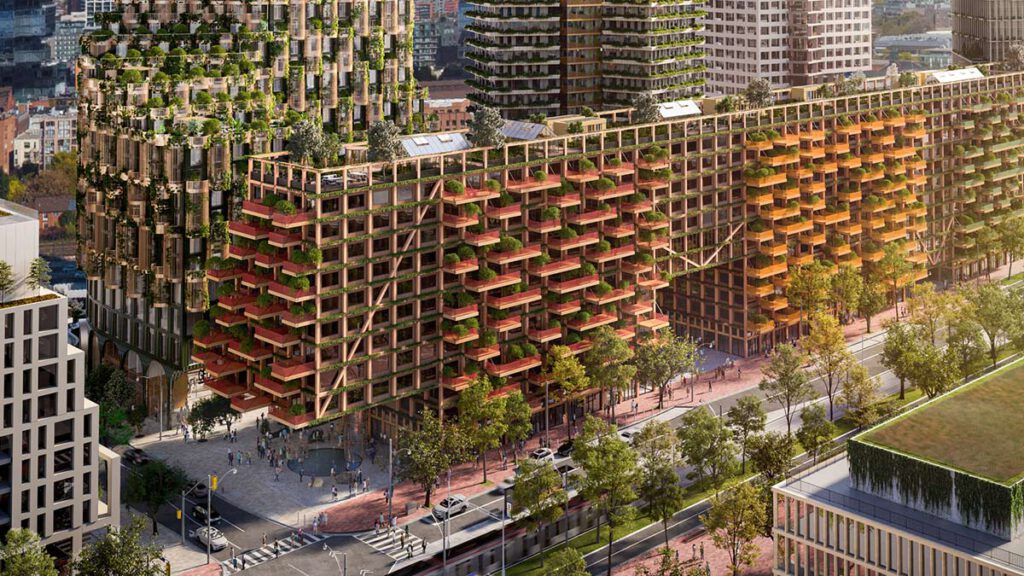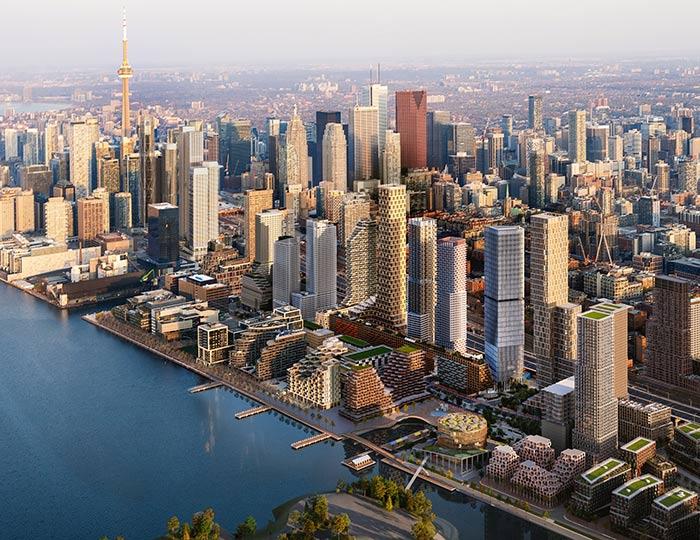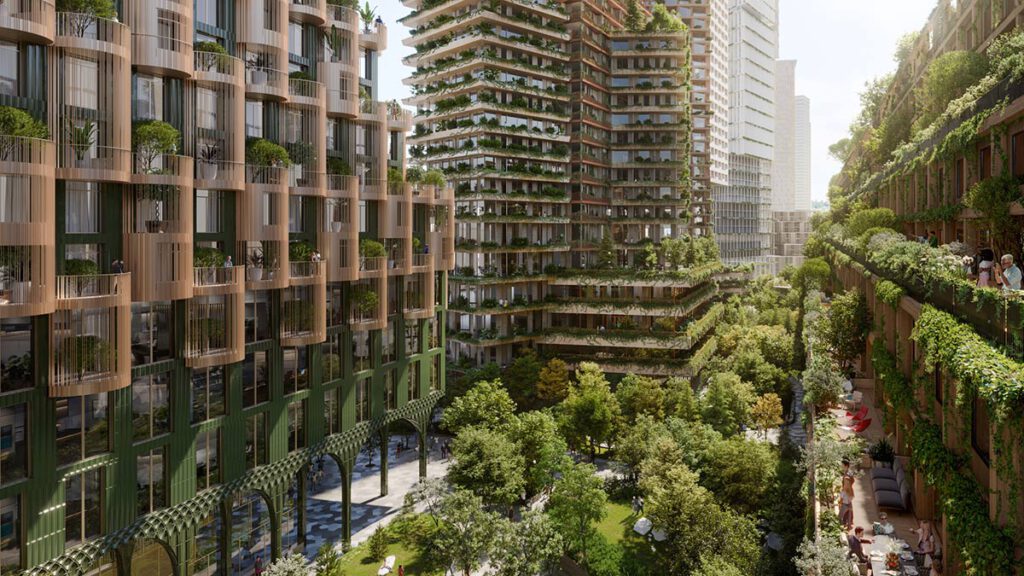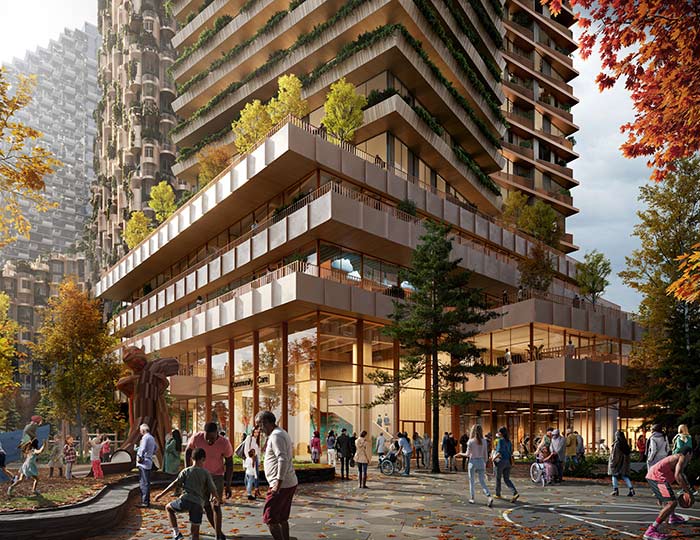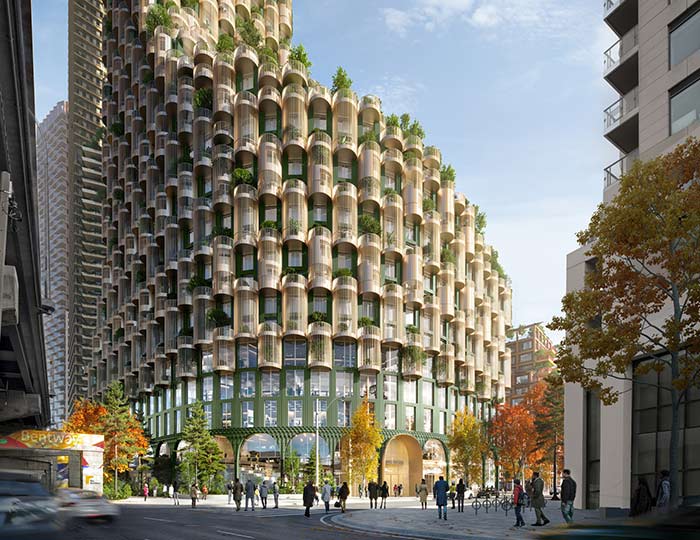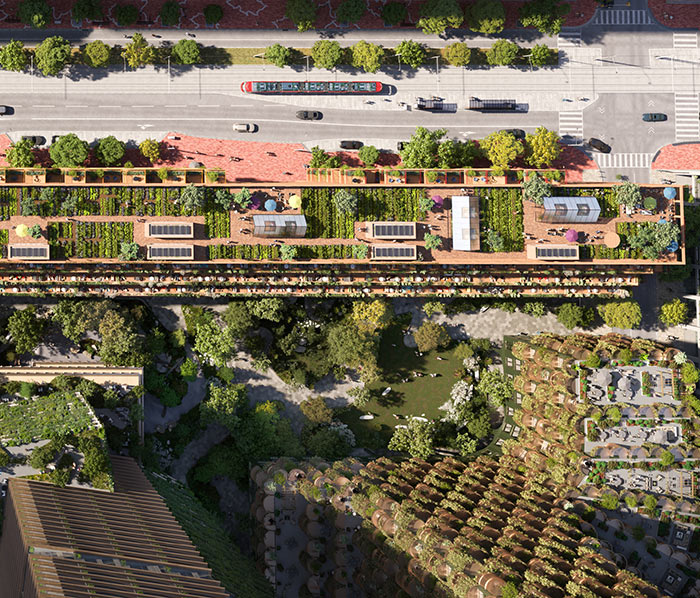Superblock designed with mass timber
Canada’s megaproject Waterfront Toronto includes a new district called Quayside, an all-electric and climate-neutral community. Its highlights are a two-acre urban forest and the residential Timber House by architect David Adjaye.
When it comes to urban development, the Canadian city of Toronto has done its homework. “Think big” is its planners’ motto – whether in Downsview, to the north of Toronto, or in the extensive revitalization project on Toronto’s waterfront. The word “big” doesn’t actually refer to size in this case, but instead to the “bigger picture”. Without a doubt, their concept goes beyond building on various plots of land and adding a scattering of green space in between. Instead, the task force for this megaproject on Lake Ontario intends to create an urban district that takes a hands-on approach to tackling the acute problem of climate change.
Climate-neutral community
The new masterplan for Quayside – just one section of the harbour development – includes 800 affordable housing units, an urban forest, and timber constructions of an impressive size. Public development managers Waterfront Toronto describe Quayside as “the first all-electric, zero-carbon community at this scale”.
It is the second time around for this green prototype. The first master plan was presented by Google subsidiary Sidewalk Labs, which envisaged a fully networked, eco-friendly smart city. That project was ultimately jettisoned, though, as the public gave the thumbs down to being monitored 24/7.
Three renowned architectural firms are involved in the new vision for Quayside. Its curved building with many rounded balconies – aptly named Western Curve – is from London-based Alison Brooks Architects. Right next door is The Overstorey, designed by Danish architectural bureau Henning Larsen with a stepped cubic structure. But possibly the most spectacular part of this sustainable neighbourhood is Timber House by UK architects Adjaye Associates.
A superblock with timber engineering
Timber House is sited in the second row behind a total of five high-rises, made entirely of wood. Stretching along a whole block, upon completion it will be among Canada’s largest residential timber buildings. Urban farming and garden plots on the roof of the 12 storeys not just enable local growing, but also help improve the urban climate.
We set out to make Quayside the kind of community that meaningfully improves the lives of its residents, neighbours and visitors.
George Zegarac, Waterfront Toronto CEO
Its elongated and fortified shape is similar to the Red Vienna superblocks. And there are certain similarities in its social aspiration as well. Besides affordable, high-quality living and a lot of surrounding green space, Timber House will also provide homes for seniors. “We set out to make Quayside the kind of community that meaningfully improves the lives of its residents, neighbours and visitors,” explains George Zegarac, Waterfront Toronto CEO.
Two acres of urban forest
The lush greenery on the terraces and loggias of Timber House adds to the verdant foliage between the blocks of houses. According to the design, this area will be filled by an urban forest that offers residents green space for rest and relaxation and also counteracts heat islands in the city.
The two-acre Community Forest, as it is officially named, is the responsibility of SLA Landscape Architects. Headed by Stig Lennart Andersson, this award-winning Danish office specializes in urban spaces that appeal to the senses. This woodland area will provide “a network of car-free green spaces for residents and visitors” – to quote the project description.
Refuge areas for extreme weather
When it comes to the climate crisis, Waterfront Toronto takes a pragmatic approach. Besides all the measures that aim to achieve a significant reduction in greenhouse gas emissions, the city planners are also developing measures that take account of the changing climate. For instance, all buildings must be equipped with refuge areas where the power supply is guaranteed for 72 hours.
In the case of power cuts, extreme weather events and other emergencies, residents and workers can take shelter there safely. The sobering appraisal of the urban development company reads: “Even if carbon emissions were cut to zero today, we are likely to experience average global warming above 1.5 ⁰C this century. This will mean an increase in the severity and frequency of extreme weather events.” The city of tomorrow aims to be prepared.
Text: Gertraud Gerst
Translation: Rosemary Bridger-Lippe
Renderings: Waterfront Toronto
